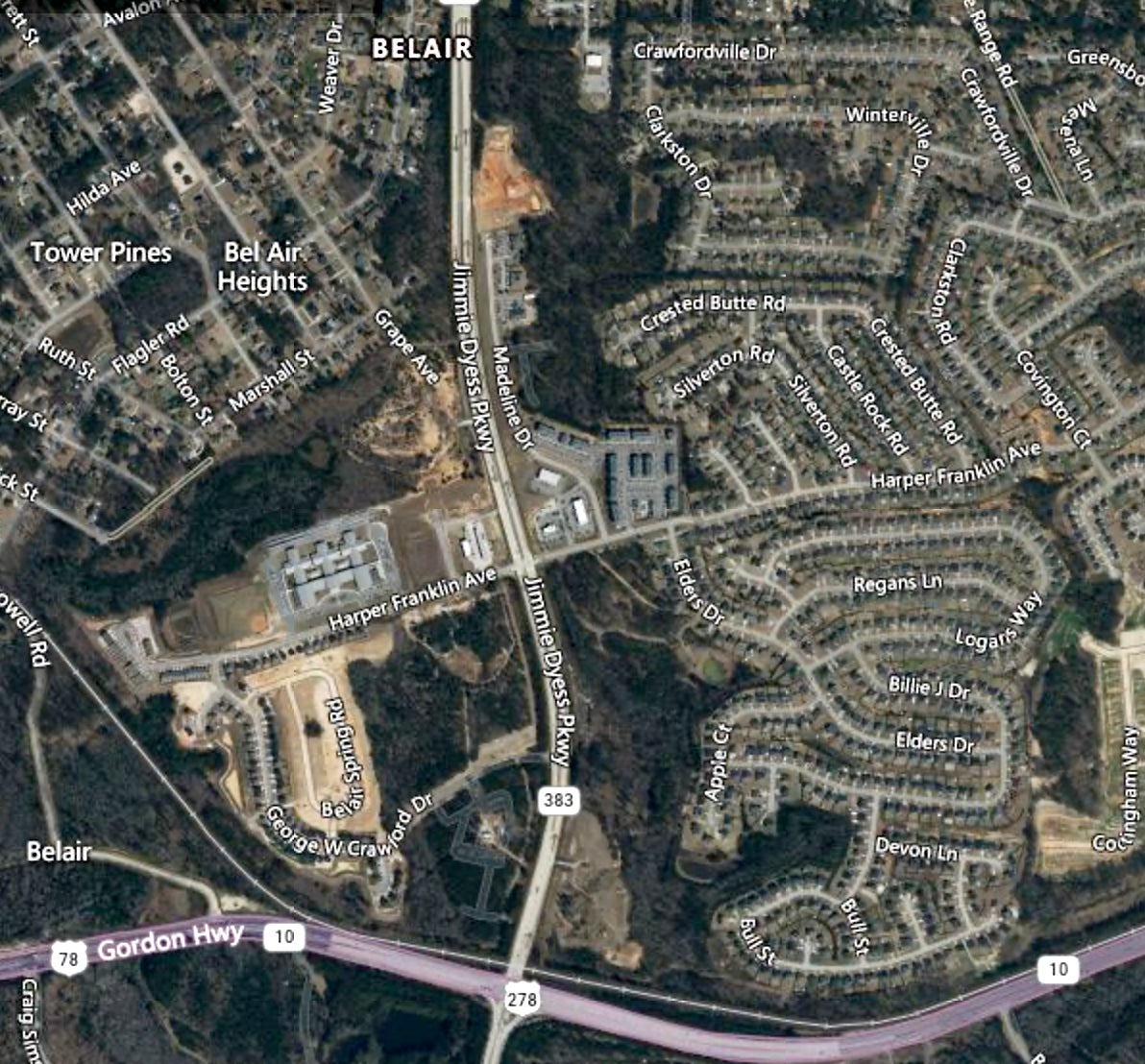Jimmie Dyess Parkway commuters will benefit from Augusta’s decision to illuminate the state route using American Rescue Plan funds.
Georgia Department of Transportation billed the sprawling 2.6-mile parkway as a shortcut from I-20 to Fort Eisenhower when it opened 25 years ago. Today development including subdivisions, a school and soon a Kroger Marketplace straddles the road near Gate 1, and neighbors are growing increasingly concerned.
“It’s dark, and a lot of people are getting killed,” said Keith Barrett, one of about 25 area residents who attended Tuesday’s Augusta Commission meeting in support of adding lights and other improvements.
“We have Kroger coming, and we have children walking,” said area resident Corinna Ludwig.
There have been hundreds of wrecks and multiple fatalities on the four- to eight-lane roadway, named for the Congressional Medal of Honor and Carnegie Medal recipient. Last month, a cyclist was struck and killed on Jimmie Dyess near Gordon Highway and there were other fatal wrecks on the road in 2022 and 2023.
But when Engineering Director Hameed Malik asked Georgia Department of Transportation about lighting, the “response was, in our process we don’t do the street lighting,” Malik told commissioners Tuesday.
Instead, the city should develop a plan and find funding and GDOT will surely approve, he said.
For a 1.5-mile section, the city has estimated it will need 150 streetlights, he said.
The area is so rapidly growing that a large segment was shaved from District 3 into District 5 during 2021 redistricting. District 3 Commissioner Catherine Smith McKnight, who raised the concern several years ago, and District 5 Commissioner Bobby Williams both pressed to fund the lights Tuesday.
“How much is in ARP?” Williams asked.
The city has about $1.4 million remaining in American Rescue Plan funds, Interim Administrator Takiyah Douse said. That’s left from the city’s $82 million allocation.
Williams made a motion to spend $500,000 of the remaining funds to begin the lighting project.
Commissioner Alvin Mason questioned the lack of state or Columbia County involvement.
“There’s no question Jimmie Dyess needs lighting,” he said. “Why aren’t we holding the people accountable who are accountable? It’s a direct path from I-520 to Fort Eisenhower.”
The post is the “cyber center of the world,” he said. “Thousands of cars are coming in from Columbia County. It’s probably as high as any number that we have here in the city.”
Williams said area legislators told him that Augusta must “buy-in” to have the lights.
“Then it ought to be a city road,” Mason said. “What we didn’t plan for or shouldn’t have to plan for is a state road that is owned by the state that has $16 billion (in surplus funds) to spend.”
Commissioner Sean Frantom made a substitute motion for Douse to identify a funding source for the entire project, but it failed 4-5, with McKnight, Mason, Williams, Francine Scott and Jordan Johnson voting no and Wayne Guilfoyle absent.
Williams’ motion passed 6-3 with Mason, Frantom and Brandon Garrett voting no.
Central’s Coker gives EMS update
In other business, Central EMS President Gary Coker gave an update on the company’s performance in Augusta. Central had to assume control of the service early after provider Gold Cross pulled out just before Masters Week.
Central now has 21 ambulances, four quick-response vehicles and two community health intervention units in Augusta, he said.
By increasing wages and developing its own EMT programs at area hospitals, Central now has 181 paramedics on staff, he said.
The hospitals have nearly eliminated the “wall time” that was blamed for response time delays after Central brought the issue to their attention, he said.
A new complaint management system fields complaints through 311, the fire department or the city administrator, he said.
Still, Augusta has “911 abusers” who sometimes call 911 several times a day. The community health intervention program seeks to visit those people and connect them with appropriate resources, he said.
In response to a stated need, Central staged ambulances at 40 high-school and middle-school football games in the fall at no additional charge, he said. Staffers also developed and conducted a food drive on their own, he said.
Soon Central will begin a program with area industry, to teach workers to provide medical assistance before an ambulance arrives, he said.












